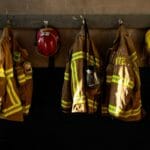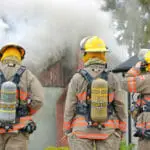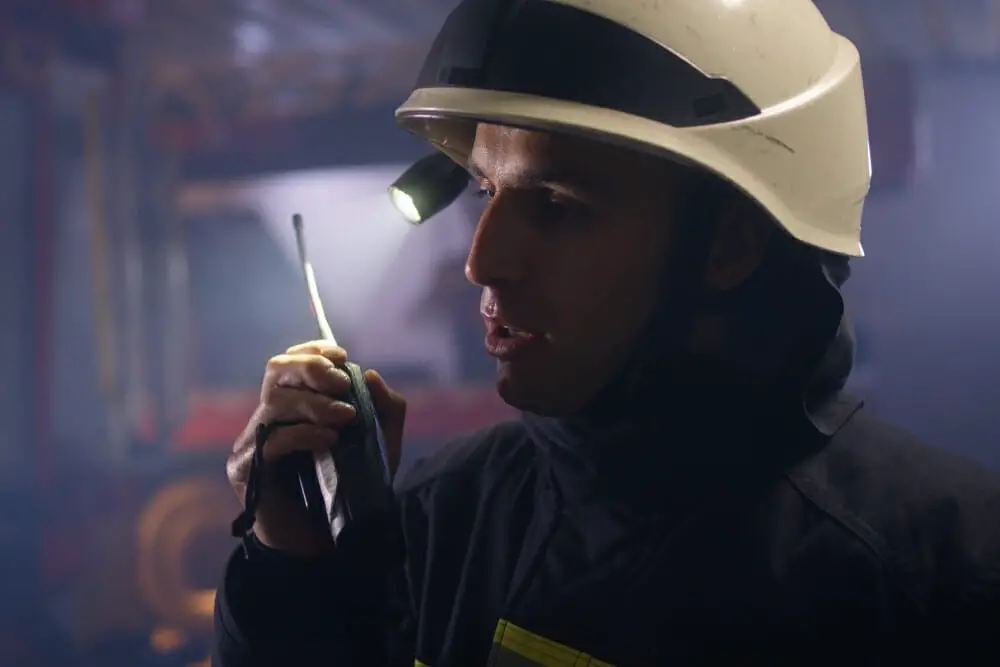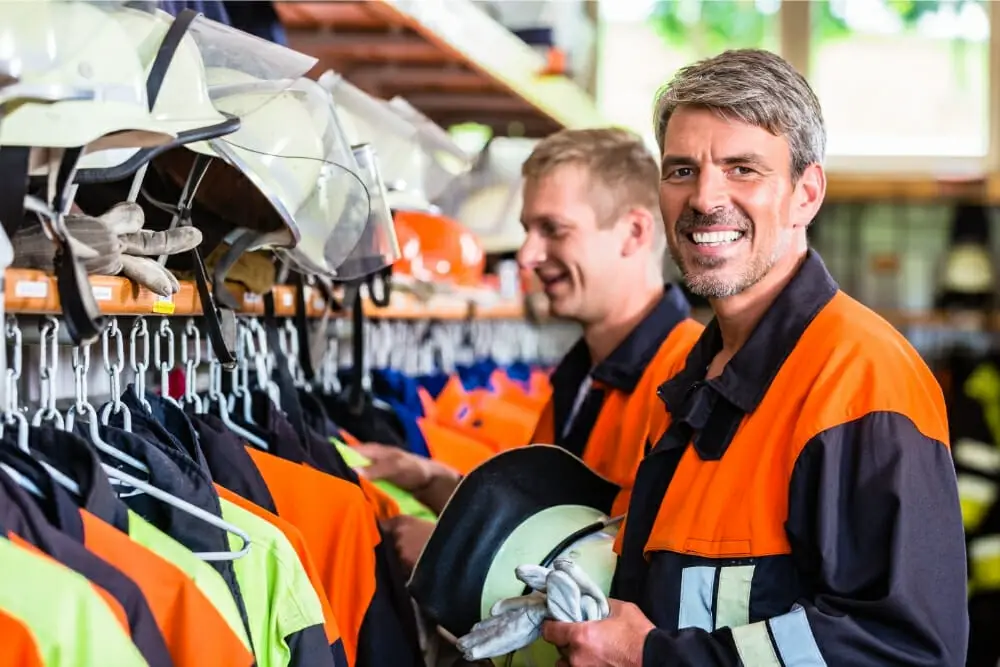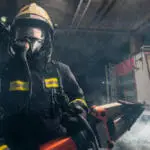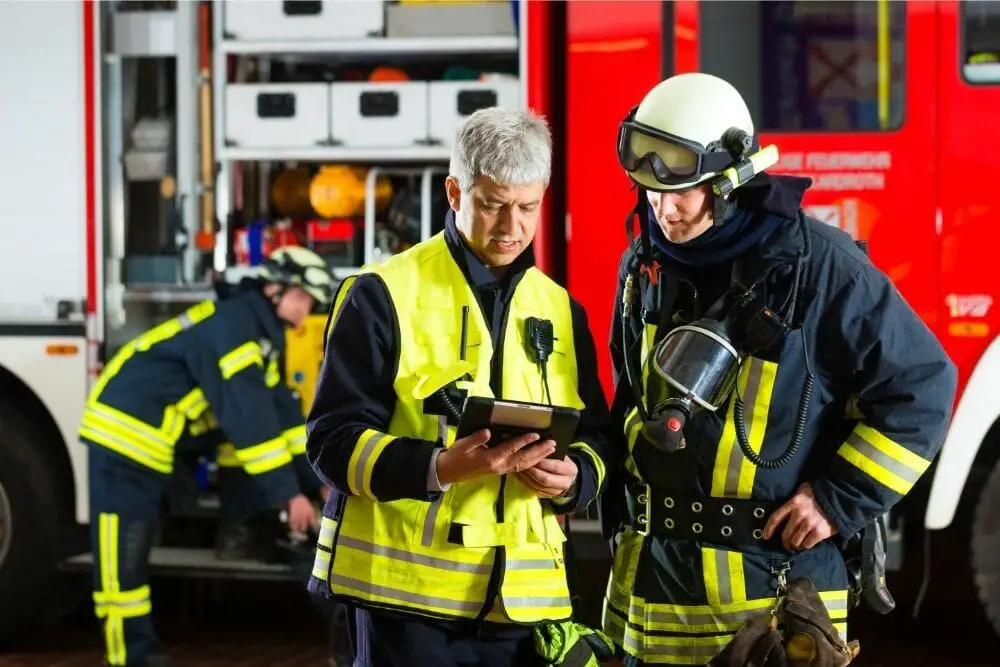To enter fires and dangerous situations, firefighters require the finest quality clothing and equipment. The problem is that the majority of this equipment may be somewhat heavy.
How much does everything weigh, why is firefighting gear so heavy, and can it be made lighter?
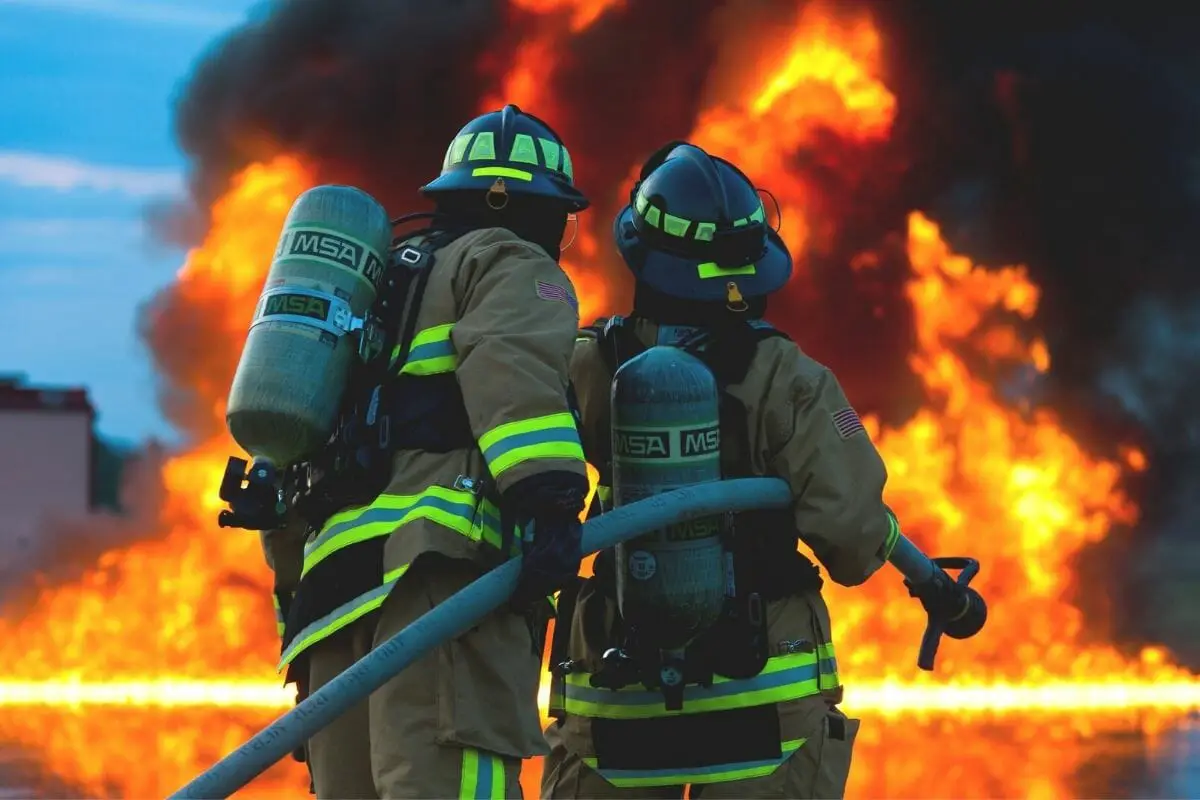
The typical weight of firefighting gear is around 45 pounds. This includes shoes, clothes, gloves, a hood, and a mask. Depending on the additional equipment a firefighter decides to carry, the weight may vary dramatically.
Here is everything you need to know about firefighters’ clothing and gear and what it’s all for.
Firefighter Gear
To keep safe when fighting fires and working in dangerous environments, all firefighters must carry loads of gear.
There are several names for this equipment. Numerous firefighters call this "bunker gear" or "turnout gear."
Coat, trousers, boots, gloves, hood, and SCBA (self-contained breathing apparatus) are the standard elements of turnout gear.
This is all just their basic gear without any extras, but these are the fundamental items needed to enter a burning building.
When you add up the weight of all the components, you arrive at over 45 pounds. This is a tremendous weight, especially under risky circumstances.
Why Is Their Gear Heavy?
To be effective, firefighting equipment must be strong, durable, and heavy in many ways.
However, weight is not always a good thing, and many firefighters try to reduce the weight of their equipment as much as possible.
However, there are limitations owing to protective equipment requirements. There are several robust and thick materials, as well as multiple layers, to protect the wearer.
Reduce the number of layers or remove a protective feature, and you run the danger of suffering an injury or worse.
Let’s start with their protective jacket. The firefighter's turnout coat is large, thick, and very protective. This pertains to the use of three fundamental layers.
Typically, the outside is made from Nomex or Kevlar, both of which have a durable surface and fire-resistant properties.
Then, a water-repellent chemical is applied to ensure that the skin remains dry, even if the jacket becomes somewhat damp. This is required to prevent burns if trapped water becomes steam.
Then, an inside layer safeguards the user against severe heat. All three are vital, yet together they produce weight that can be difficult to handle.
The helmet is important for both burn and heat protection. Luckily, the heavy-duty leather helmets of the past no longer exist, since they would have been far more difficult to wear for lengthy periods.
Nevertheless, the plastic shell is rather thick, and there are flaps over the ears and neck. Again, they are essential, but they increase the total weight.
Firefighters demand the same amount of foot and leg protection and thermal insulation from their boots.
Some may be made of leather for durability and water resistance, while others are constructed from insulated rubber.
These heavy-duty boots have steel toes and shanks for improved protection against harm, such as if a piece of a structure were to fall on the toes.
Occasionally, you may encounter equipment with Gemtor loops, as well as harnesses, attached.
These attachment points are essential for enhancing the functionality of bunker gear, as they allow users to attach themselves to a ladder or give a place to be dragged to safety.
While this is very useful and adds an extra layer of safety, these extra features may add 5 pounds to the total weight.
The third component is the crucial Self-Contained Breathing Apparatus. This is another must-have piece of equipment that enables the user to breathe in smoke-filled settings while still being somewhat hefty.
Extra Equipment
It is also essential to emphasize that the strain of carrying around the weight of this gear is not the only one that firefighters are expected to shoulder.
There will be times when they will need to carry equipment on their person in order to put out fires or deal with other types of emergencies.
Some of this gear is relatively ordinary, such as a radio or a flashlight, which may be used to increase communication and lighting in an environment with low levels of illumination.
Carrying them in a pocket or connecting them to other things causes additional weight to be carried around, even though they are not extremely heavy on their own.
If firefighters have to deal with a structural collapse (such as part of a building collapsing), it is likely that firemen will be required to use specialized equipment in order to find survivors.
One example of this type of equipment is a thermal imaging camera.
There is a possibility that the additional tools will bring the total weight up to somewhere around 77 pounds.
The problem of wet clothing is another issue that causes worry and should not be ignored.
When reacting to an emergency, firefighters run the danger of getting their gear wet in a variety of different circumstances.
These include the use of water to extinguish a fire, the activation of the sprinkler system of a building, and the presence of rain during the response.
If you've ever attempted to wear a coat or a pair of jeans when it's raining, you'll have some concept of how much heavier things might seem to be when they're wet through and completely drenched.
Any jackets worn by firefighters that become wet should be treated in the same manner as well.
Is This Weight Dangerous To Carry?
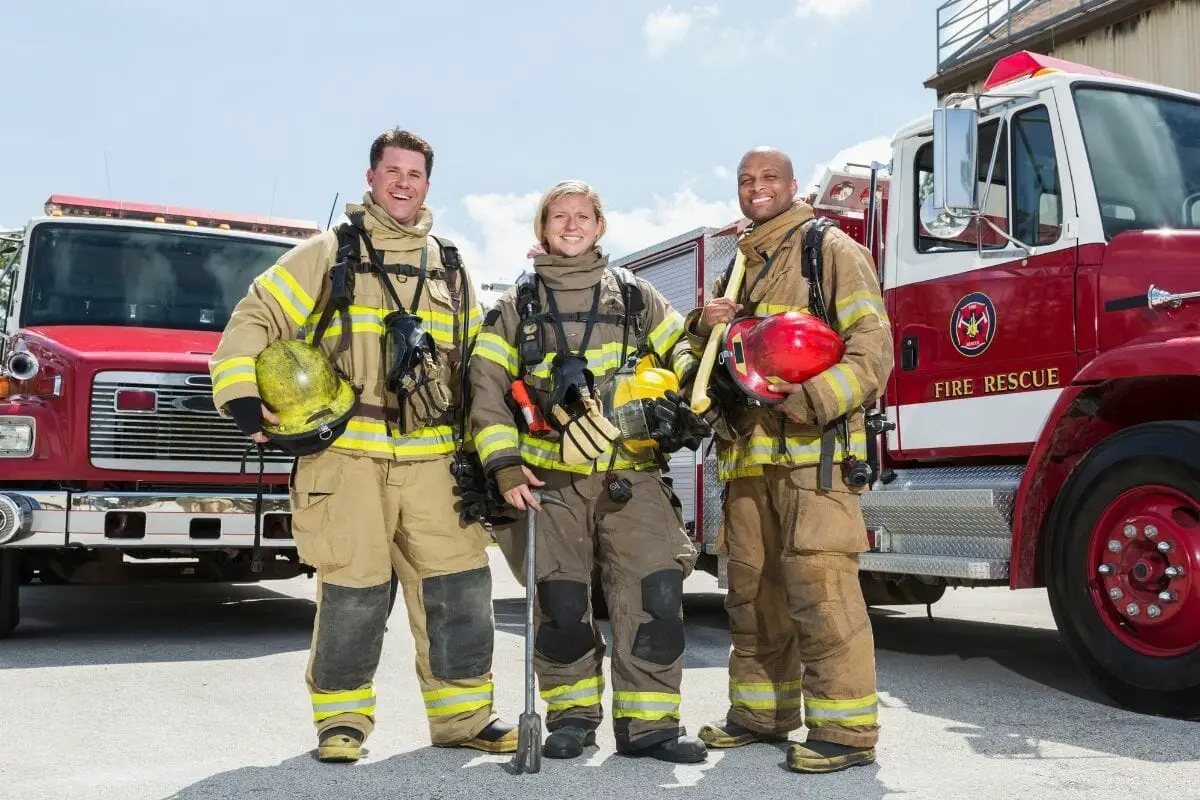
There are both advantages and disadvantages connected with all of these strong and protective layers.
One big disadvantage is that the weight of a firefighter's equipment causes them to exert more effort and work when moving.
In a smoke-filled facility, this might lead users to get exhausted and short of breath over time.
If engaged in this on a regular basis, firefighters can be subjected to substantial mental and physical strain. Fatigue and exhaustion are problems that may not only reduce the team's effectiveness during a callout but also may cause some firefighters to collapse.
This is the reason why there is such an emphasis on physical fitness and training with firefighting equipment for new firefighters.
The National Fire Protection Association often publishes information on firefighter fatalities and injuries. Considering the percentages, the outcome might be rather alarming.
The 2019 report documents the deaths of 48 firefighters. Only eight percent of deaths were caused by burns, and there was one fatality due to heat exposure, demonstrating that bunker gear can be extremely advantageous.
Despite this, 54 percent of fatalities were caused by medical issues, stress, or overexertion.
What is unknown is the extent to which heavy machinery contributed to these fatalities.
Nonetheless, it is notable that more than half of all fatalities were attributable to this cause, as opposed to fire-related events, explosions, or structural collapse. 22 of the 26 fatalities were attributable to cardiac arrest.
Improving The Gear
The good news for fire departments is that attempts are being made on a regular basis to find a solution to the weight issue and make firefighters' gear lighter.
These enhancements need to be included in the system as quickly as possible so that the weight can be lifted off of the firefighter's shoulders.
For the average person, losing a few pounds can have a substantial difference in their quality of life.
The same can be said for firefighters and their equipment. If some of their items were a bit lighter, they would be able to move faster, feel less strain, and probably suffer from fewer health issues.
The ability to utilize lighter materials and maybe fewer layers without surrendering the protection against heat and flames is the most essential component in this entire process.
This is because lighter materials and fewer layers are easier to work with.
There aren't many companies that have achieved big advancements in the materials that are used for firefighting gear.
TenCate Protective Fabrics is the firm that has come out with a new option that has a noticeable decrease in weight though, so changes are beginning to happen.
The fabric they have made weighs 5.6 ounces per square yard, which is significantly less than the previous and more common options, which weigh around 7.5 ounces per square yard.
When compared to a larger jacket, this alteration ought to be rather noticeable, and the reduction in weight might end up making a firefighter's life a lot simpler overall.
The first thing that designers need to keep in mind is that the NFPA 1971 provides criteria that are absolutely vital for them to complete. This is an important issue for designers to keep in mind.
In order to cut down on the number of people who are burned when using personal protective equipment, users are obliged to have protection against heat penetration for a period of at least 17.5 seconds.
It is important that the equipment that firefighters utilize in the future weighs as little as possible while still providing the protection that they need.
However, every part of the gear is essential to a firefighter's role, so cutting things out is proving to be a massive challenge.
Thankfully, innovations in design and materials are leading to improvements, and we can be assured that in the future, we will see turnout gear that is both better and lighter.
This gives us reason to be optimistic about the future.
Summary
While the standard gear for firefighters weighs around 45 pounds, this is likely to change depending on the situation that the firefighter is in.
A variety of factors can change the weight, such as if the clothes get wet, or if the firefighter has to carry extra equipment with them out on a job.
Being a firefighter is a very physically demanding job, and they are trained to handle this weight as best they can. However, when the weight can get as high as 77 pounds, it can be a lot for them to bare.

